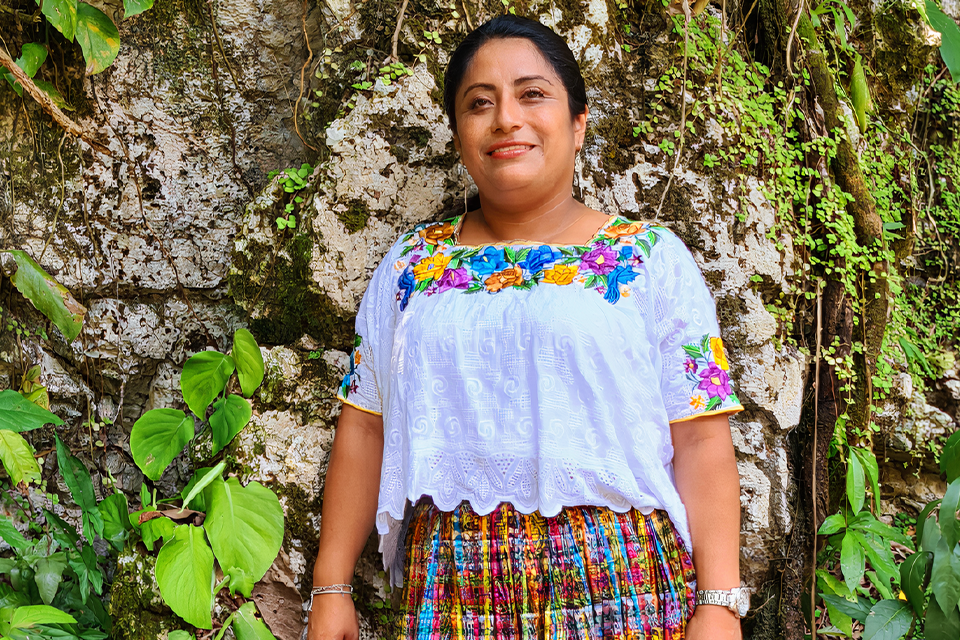Women in Leadership: Activists Dedicated to Environmental Restoration and Conservation. | Graciela Coy
Date:

Environmental activist Graciela Coy is president and legal representative of the association Ak' Tenamit, a Mayan organization founded in 1992 to address the needs of indigenous communities around the Dulce River, Izabal, in eastern Guatemala.
Since its conception, Ak' Tenamit has worked to reduce poverty and promote sustainable development in rural communities through socially and culturally appropriate programs, promoting economic autonomy and gender equality. In all aspects of its work, the Association seeks to obtain the revalorization of the Q'eqchi' Mayan culture.
Why do you defend the environment?
I defend the environment because it is an essential part of our lives, it provides us with food, shelter and everything we need to live in harmony with Mother Nature.
What is the relationship between women and the environment?
The two issues complement each other. Women play an important role in the conservation of natural assets and resources and, therefore, it is important to provide them with all the technical and financial tools to strengthen their leadership in caring for the environment.
Why do environmental issues particularly affect women?
In rural communities, women carry the greatest burden of responsibility for the care of our family members. Women are the first to suffer the effects of climate change.
How do you practice activism in both cases?
My work consists of articulating different activities for the benefit of the women served by the organization. My experience is based on the management of resources, including community tourism projects, to ensure the fulfillment of women's rights such as access to education, access to food and other elements necessary to ensure the well-being of young women who stay overnight at the Ak' Tenamit educational center.
What is the connection between environmental preservation and women's land rights?
The connection is the responsibility and direct leadership that women exercise in the face of conservation objectives. Access to land is a right that allows them to decide on the appropriate use and means of production of the land.